Uncovering the Many Faces of Vaughan
A city of firsts, Vaughan’s rate of growth outpaces both that of the province and the country.
Who could resist the promise of a happy, more meaningful life — one that offers an integrated mix of both urban and rural living? The City of Vaughan, Ont., with its world-class shopping, efficient transportation, state-of-the-art hospital and dedicated citizens who are committed to giving back, touts the community as one that delivers big city living without the big city hassles.
Kathy Davenport, a 20-year resident of Woodbridge, Ont., and a teacher at St. Michael the Archangel Catholic Elementary School, says that what she appreciates most about Vaughan is the diversity of culture in the schools. “I believe that everyone can learn from each other,” Davenport says. “And, not only is my neighbourhood friendly, [but] my school community [also] has a great parent community who volunteers their time and energy to raise significant funds for the school.”
Encompassing the communities of Maple, Kleinburg, Concord, Woodbridge and (part of) Thornhill, Vaughan is one of the fastest growing suburban cities in the Greater Toronto Area (GTA). With a population explosion of 80.2 per cent between 1996 and 2006 (Statistics Canada), Vaughan, incorporated in 1991, is now the GTA’s fifth-largest city, as well as the 17th-largest city in Canada.
“Vaughan is one of the most interesting, up-and-coming municipalities in Canada,” says Brian Shifman, president and CEO, Vaughan Chamber of Commerce. “Certainly, we are one of the fastest growing, based on various metrics, including the size and growth of our business community, as well as our population. The city has been named one of the most lucrative places to do business, and we have received a number of accolades relative to the speed in which we have been able to grow and ultimately thrive.”
“Vaughan is one of the most interesting, up-and-coming municipalities in Canada” — Brian Shifman, president and CEO, Vaughan Chamber of Commerce
Shifman credits the growth to a highly educated, multi-lingual workforce, a very strong transportation network, close proximity to both the 400 series highways, which is important for shipping, as well as the CN Railway. “We have a government that is open for business. As well, we have what we like to think of as a very strong chamber of commerce,” he says.
Rich in history, Vaughan was originally settled by the Haudenosaunee and Huron-Wendat First Nations communities, who fished and hunted along the Humber River’s Carrying Place Trail. Archeological treasures from this time, including traditional tools and longhouses, have been discovered on the Vaughan sites of Seed-Barker and Boyd (Woodbridge), as well as the Jarrett-Lahmer site, in Maple.
The origin of the city’s name dates back to 1792, when Lieutenant-Governor John Graves Simcoe bequeathed the name to the region as a means of recognizing and honouring Benjamin Vaughan, an instrumental negotiator in creating the Treaty of Paris (1783). The pact ultimately ended the American Revolutionary War.
From an economy that was originally rooted in agriculture and milling, Vaughan’s flourishing resources now encompass an urbanized economy that boasts multiple high-rise buildings; a diversity of restaurants that reflect the multicultural palette of the city; Canada’s first and largest theme park, the 134-hectare Canada’s Wonderland; the Colossus Vaughan Cinemas, a multi-plex theatre with IMAX 3D, the first of its kind in Ontario when it opened in February 1999; and Canada’s 10th-largest shopping mall, the Vaughan Mills Shopping Centre. Vaughan is also the first suburban city to get its own Toronto Transit Commission (TTC) subway line.
In fact, the city’s growth factor over the past eight to 10 years has been seismic. Mayor Maurizio Bevilacqua states that, since he took office in 2010, Vaughan’s employment rate and economic growth have outpaced the overall performance of the country, which in turn are motivators for people to move or relocate to Vaughan. “The city of Vaughan is well-regarded and has found a place among the emerging cities not just in North America, but [also] in the world,” says Bevilacqua. “People are attracted to Vaughan because of the great advantages we have in the city. We have all the attributes of a great city — a dynamic and safe community. People are also impressed by the incredible growth that the city has experienced over the past eight years, since I have been mayor, including the creation of more than 55,000 jobs,” he says. “And Vaughan’s economic growth rate of 3.5 per cent outpaces both the province of Ontario, as well as that of the country. All of these factors contribute to why people are drawn to, what I consider, is a city on the rise.”
“Vaughan’s economic growth rate of 3.5 per cent outpaces both the province of Ontario, as well as that of the country” — Mayor Maurizio Bevilacqua, City of Vaughan
With the explosive growth of York Region, of which Vaughan is a part, a look at the volume and rate of crimes, year over year, as well as the measures being implemented by York Regional Police (YRP) to combat those crimes, are important to understanding the impact that the population growth has had on the community. “Property crime, which accounts for 58 per cent of all criminal work in No. 4 District, located in the city of Vaughan, is the main driver of our workload,” says superintendent Stu Betts, York Regional Police. “The top five offences within property crimes stated in order are: theft under $5,000; shoplifting; fraud; theft from motor vehicles under $5,000; and mischief to property.”
The second-biggest workload driver is crimes against people, which typically includes violent offences. Crimes against people comprise only 16.5 per cent of the criminal workload in Vaughan, representing a big drop from the property crime workload.
“The top five crimes against people are: assaults (35 per cent of the crime calls); uttering threats (19 per cent); assault with a weapon or causing bodily harm (11 per cent); and harassing communications and sexual assaults, which represent five per cent of the workload in Vaughan and one per cent of our workload in the region,” Betts says.
The third top driver, within the criminal aspect, is criminal traffic violations, which represent 12 per cent of YRP’s criminal workload in the city of Vaughan. In this category, failure to remain at criminal collisions tops the list at 59 per cent, while impaired driving, alcohol and drug violations collectively account for 29 per cent of the criminal traffic violations dealt with by YRP in the City of Vaughan.
“The traffic component is a concern for us because it is alcohol and drug related,” Betts says. “Alcohol plays a role in so many of the investigations that we are involved in, with a lot of the assaults being fuelled by alcohol.”
The legalization of marijuana on October 17 also has YRP concerned, not just for the impaired by drug aspect, but also for the impact it could have on property crimes. “We may see break and enters increase as people break into residential properties where cannabis is being grown,” Betts says.
And that is a realistic concern, considering the stats: residential break-and-enter occurrences have increased almost 20 per cent over a five-year period and continue to be a concern throughout the region. Criminal offences in Vaughan are up 1.6 per cent between January 1 and September 18, 2018, and 6.75 per cent over a five-year period, which is consistent with the rest of York Region. However, shoplifting is down 24 per cent over the same time last year and down more than 17 per cent over the past five years.
So what are the measures that YRP are taking to effect crime prevention in the region? “We have business intelligence tools that help us to identify, based on empirical evidence, what the drivers of our crime are,” Betts says. “We target those crimes and the underlying behaviours, and that helps us ensure we are in the right place, at the right time, with the right information, doing the right things. In fact, we did some significant work on organized crime rings that were in the Vaughan area committing shoplifting sprees. So when we look at incidents of shoplifting being down 24 per cent over the same time last year, we know that we have made a significant impact in the area of shoplifting. We measure crime, but we also measure our success in addressing those crimes.”
The YRP works closely with its citizens and has many partnerships with businesses, retail establishments and agencies, such as the Alcohol and Gaming Commission of Ontario (AGO), to help fight crime at street level, believing that together we can make a difference on our streets, in our neighbourhoods, in our workplaces and our schools. This all contributes to the municipality of York Region being identified in Maclean’s magazine’s 2018 report Canada’s Most Dangerous Cities as one of the safest communities in Canada, regardless of population. “Without reservation, I am absolutely confident in saying that York Region is one of the safest communities in Ontario, if not the safest in Canada, based on the size of our community,” Betts says, who is a 21-year resident of York Region.
“Without reservation, I am absolutely confident in saying that York Region is one of the safest communities in Ontario” — Superintendent Stu Betts, York Regional Police
Alessandra M. Pompeo, who has lived in Vaughan for most of her 36 years, is one of those residents referenced by the mayor. A communications adviser of website content management for the City of Vaughan, Pompeo, her husband of nine years, David, and her two children, Elizabeth, 6, and Gabriel, 4, live close to her childhood home in Maple. “Safe” and “fun” are the two words that come to mind for Pompeo when she describes what Vaughan was like when she was growing up. “I remember my community being safe, because it was safe to be outside, walk to the store or go for bike rides with friends, all without supervision or a cell phone, I might add,” Pompeo says with a laugh. “I remember my childhood being fun, because we always had opportunities to play and explore, whether it was our own backyard, the parks and playgrounds around the city or Canada’s Wonderland, which is right down the street,” she says. “We always had a great time. Currently, one of my favourite things to do in Vaughan is to enjoy an afternoon in a café, in a historical village such as Kleinburg or go out to dinner with family and friends. I love to take walks around our subdivision or along nature trails with my family.”
Pompeo lived in Schomberg, Ont., for two years, but really missed the things that were most important to her, including family and friends. So, she and David decided to move back to Vaughan. “As a mother of a growing family, Vaughan has everything we need, from great shopping and green spaces, to entertainment, services and health care. Growing up here, we were surrounded by farmland. In the early years, we had to do our shopping in Richmond Hill, Ont., as there was nothing available to us where we lived, such as a large grocery store,” she recalls. “Fast forward 36 years, and Vaughan has become the centre of all conveniences.”
With more than 11,000 businesses, Vaughan has a strong and dynamic economy. Areas of growth for employment range from logistics to construction, building supplies, automotive and medical supplies, a category in which Vaughan has a strong presence. And since Bevilacqua has been in office, close to $10 billion in building permits have been issued, driving both a strong economy and increased opportunities for diverse housing options. “Our strategy is to intensify, which in turn allows for more people to access the housing market,” Bevilacqua says. “Land is in high demand. And prices are very high because of the great advantages that the city has, as well as the strong economic and employment numbers. One of the reasons that I championed secondary suites in our city was to help provide housing options that respond to the incredible needs of the people who want to live in Vaughan,” he says. “It is important to find ways to diversify the housing stock. Everyone understands the need, and it is important to address it.”
The opening of the new TTC subway extension line, the Vaughan Metropolitan Centre Station, is another boon to the city, providing commuters easy and fast access to Toronto’s downtown core. The new station is part of a greater vision, one that encompasses the new Vaughan Metropolitan Centre (VMC), the largest and most significant development project in Vaughan’s history. The VMC includes more than 1.5 million square feet of commercial office space, 750,000 square feet of new retail space, 12,000 residences, a library, daycare centres and a YMCA. “We have a tri-party agreement with the YMCA,” Bevilacqua says. “It is a co-operative partnership between the private sector, the YMCA and the city. When a city gets a YMCA, it is a real statement; it is an iconic institution that literally serves thousands and thousands of people. I know people will be drawn to that.”
“It is a diverse and accepting community, with citizens who love their city. We are proud to call Vaughan our home” — Peter Cortellucci, vice-president of Cortel Group
New home builds by developers such as Treasure Hill, Canvas Developments, Artista Homes and the Cortel Group have been key to the rich development and explosion of Vaughan’s population. “The Cortel Group has been active in the Vaughan community since the early 1970s,” says Peter Cortellucci, vice-president of Cortel Group. “It is a great city with immense potential, and it is ranked one of the safest communities in Canada, with one of the lowest tax rates in the GTA. More importantly, it is a diverse and accepting community, with citizens who love their city. We are proud to call Vaughan our home.”
Along with developing and building more than 2,000 units in Vaughan, in 2015, the Cortel Group also built the first residential high-rise in Vaughan’s new downtown. “We will be setting the bar even higher in the Vaughan Metropolitan Centre with a new tower, which can be previewed at www.cgtower.ca,” says Cortellucci.
The choice by major corporations, such as the Vaughan Mills Shopping Centre and Canada’s Wonderland, to locate in Vaughan carries with it a strategy that promotes these properties as ultimate destination centres. This in turn has been instrumental in raising the city’s profile on a multitude of levels, including an enhanced spike in tourism.
The Vaughan Mills Shopping Centre, opened in November 2004, then encompassing 1.1 million square feet of gross leasable area (GLA). In October 2014, an additional 150,000 square feet was added, for a total of 1.27 million square feet of GLA. “The centre, which is on one floor, has a race-track configuration,” says Stephen Gascoine, general manager of the centre. “Unlike most malls, we are not anchored by large-format retailers. Instead, we have 19 smaller large-format retailers throughout the entire perimeter of the centre (there are 250 retailers altogether), along with two sit-down restaurants (Pickle Barrel and Szechuan Szechuan). We employ approximately 4,500 people, full and part time, throughout our spectrum of retailer offerings. I feel confident saying that 80–90 per cent of these employees live near the Vaughan Mills Centre.”
The centre, which draws over 14 million customers yearly, has an unusually large trade reach of 65 kilometres. A visit to Vaughan Mills is an experience that draws shoppers and tourists from well outside the city’s parameters. LEGOLAND Discovery Centre opened its first location in Canada, in the centre. And in late 2019, Vaughan Mills will be home to the world’s first off-resort Cirque du Soleil Creactive family entertainment centre. This 24,000-square-foot circus playground will offer visitors the opportunity to participate in a variety of Cirque du Soleil-inspired activities, including bungee jumping, trampolines, aerial parkour, mask design, juggling, circus track activities and more. “We are not just your standard shopping centre,” Gascoine says. “If you look back to when Vaughan Mills was originally built, the area was mostly agricultural. We had to compile several different parcels of land over several years in order to build. When the centre was complete, we sold off parcels of land around the centre, which spurred development in the area,” he says. “Vaughan Mills was actually a catalyst for the development of a large amount of the area around the centre. We are a fundamental and significant part of Vaughan and have often been recognized by the mayor as an important part of the city.”
With the dynamic growth and expansion that has happened within Vaughan over the past 10 years, a look at the people who have contributed to the burgeoning outsized growth of the city is an interesting study in the mosaic of diversity, acceptance and tolerance. Known to have some of the highest concentrations of southern Europeans (notably Italians) and eastern Europeans (chiefly Russians), there is also a strong Jewish population. The diverse spectrum of cultures contributes to the wealth of dining and entertainment experiences in the city.
“We are one of the safest communities in the country, largely because of the great ability of the citizens to express and manifest a mutual respect and admiration for one another,” says Bevilacqua. “We are very well-known for our cultural diversity — it is a strength. People here come together, regardless of background, and work together toward achieving the well-defined goals of our city.”
These goals include being an avant-garde dynamic city where people live happy, meaningful lives. In fact, according to the World Council on City Data, www.dataforcities.org, life expectancy in Vaughan is one of the highest in the world.
Some of the factors that will continue to ensure the happiness of Vaughan’s citizens include the soon-to-be-open North Maple Regional Park. At 900 acres, the park is one of the largest in any city, and it is larger than New York City’s Central Park (840 acres). “An incredible transformation in the spirit of the city has happened over the last eight years,” Bevilacqua says. “The city’s image has vastly improved.”
Vaughan also enjoys a variety of private and public golf courses, including the prestigious Eagles Nest Golf Club, Copper Creek Golf Course and the Thornhill Golf & Country Club. Nature lovers can enjoy a Zen experience at the 325-hectare Kortright Centre for Conservation, as well as the Boyd Conservation Area, located at the headwaters of the Don and Humber rivers. Boyd Conservation provides opportunities for serene walks, hikes and picnics. And if the expanding progress of the city is too much for Vaughan residents, they can step back in time and experience life as it was in the 1860s, at Black Creek Pioneer Village. The working village has a blacksmith shop, a weaver’s shop, a harness and saddlery shop and a mill.
While Vaughan has grown in leaps and bounds across a broad spectrum of core measures, its past is steeped in landmarks and famous citizens. Group of Seven painter A.J. Casson and his wife would house-sit for Robert and Signe McMichael, the founders of Kleinburg’s renowned McMichael Canadian Art Collection, when they were away.
Fellow Group of Seven painter A.Y. Jackson resided with the McMichaels from 1968–74. “A.Y. Jackson was close friends with Robert and Signe, and resided with them at the gallery for a few years,” says Sam Cheung, media and communications co-ordinator of the McMichael. “By then, the McMichaels had begun turning their home into the art gallery. Some of our visitors recall Jackson speaking to various guests at the gallery. Fredrick Varley, another Group of Seven member, also came to the gallery, where he would visit with fellow Group of Seven artists.”
Intriguingly, the McMichael cemetery is the final resting place for six members of the Group of Seven, their spouses, and Robert and Signe McMichael.
Part of Vaughan’s captivating history is its inspirational and often world-famous people, some native to the area and others with a history in the city, who have flourished on the world stage. Renowned cosmetics innovator and entrepreneur Elizabeth Arden, who famously said, “Every woman has the right to be beautiful,” was born in Woodbridge, in 1878. Lord Beaverbrook (Max Aitken), a local Maple native, became owner of the mass-circulation London Daily Express, as well as the London Evening Standard. Lord Beaverbrook is credited with helping to define the role of journalism in society. Former Ontario premier Mike Harris (premier from 1995–2002), 2006 Olympic gold medalist Duff Gibson (skeleton discipline), author and television personality Pierre Burton and Citytv Breakfast Television co-host, Dina Pugliese, also lived in Vaughan.
“Even after I first moved to the States, I bought another house in Woodbridge — that’s how much I like it there” — Russell Peters
Happily, there is still lots of room for the up-and-comers of Vaughan. Tennis darling Denis Shapovalov, Canada’s top-ranked tennis player and a Masters semi-finalist at the 2018 Madrid Open, lived in Vaughan. His mom, Tessa, who, along with Martin Laurendeau, is Denis’s coach, owns and runs tennis programs under TessaTennis, in Concord. NBA Minnesota Timberwolves’ small forward/shooting guard Andrew Wiggins is from Vaughan.
World-famous comedian Russell Peters, known for his politically incorrect humour and his racial stereotype blasting, lived in Vaughan with his family for a few years and still owns a house there. “I love Vaughan, or as I prefer to call it, ‘Woodbridge.’ I’m comfortable there. I have family who live there. My brother, Clayton, and I bought a townhouse in Vaughan, in 2001,” he says. “It was our first house, and we bought it together. I still own it for sentimental reasons; this was the house I lived in when my career blew up in 2005. It’s where everything started happening for me,” Peters says. “And even though I live in Las Vegas and L.A., I still get my hair cut by Frank at Ultimo Hair Design on Woodbridge Avenue. He gives me the best haircuts, and I’ve been going to him for years now. I’ll literally get off a plane and go straight to Frank’s before I go anywhere else when I come back home. Even after I first moved to the States, I bought another house in Woodbridge — that’s how much I like it there.”
Among the many pluses that Kathy Davenport says she enjoys about living in Vaughan include the community centres, in particular the Vellore Village Community Centre and the Al Palladini Community Centre, where she loves to swim; the fact that everything is central; the strong sense of community and friendly neighbours; and the safety factor. “I feel quite safe at night when I am walking alone, either in the park or on the street,” Davenport says. “I also like the fact that the Vaughan Mills Shopping Centre is close by. And I find the new subway a big plus for when I want to go downtown to live theatre shows. The new subway line in Vaughan makes it quite convenient to access downtown Toronto.”
Davenport also loves the many diverse festivals that Vaughan hosts, including the Binder Twine Festival, which is held in September, Woodbridge’s Fall Fair, Rib Fest and Pizza Fest. The free summer Music in the Park concerts, held in various parks in Vaughan, are also a major plus to Davenport.
Even with the explosive growth in Vaughan, which has seen a huge number of suburbs sprouting up, along with a significant increase in traffic, Davenport says she is happy with the considerable changes that Vaughan has experienced. “I appreciate the considerable resources available to me and the proximity of those resources, as well as the fact that Vaughan has been able to maintain a spirit of quaintness in places such as Kleinburg. We have forests with trails right across the street from my school, which makes me feel like I am up North. What we have is a rural setting within an urban environment,” Davenport says.
Next year’s opening of the Mackenzie Vaughan Hospital was identified by both Pompeo and Davenport as a key and critical addition to the pluses of living in Vaughan.
“As a resident, I am very proud of Vaughan, where it has come from, and where it has yet to go” — Alessandra M. Pompeo
The dedication to furthering positive experiences within the Vaughan community by an eclectic and wide range of people and organizations is both notable and encouraging. The Cortel Group’s many philanthropic initiatives include supporting local charities, sports teams, cultural events and city-building and participating in initiatives such as the new YMCA and the Vaughan Smart Cities Advisory Task Force. Most recently, the family has supported the Mario & Nick Cortellucci Hospice Palliative Care Centre of Excellence (opening in 2019). “As a family, we are mindful of the important work that Hospice Vaughan provides to our community. Its care, love and understanding of people’s needs during sensitive and challenging times are a testament to its nurturing human spirit,” Cortellucci says.
The new Mackenzie Vaughan Hospital, which the mayor says is part and parcel of the city’s coming of age, is a study in firsts. It is the first hospital in Vaughan and the first hospital in Canada to feature integrated “smart” technology systems and medical devices that have the capability to talk to each other directly, in order to maximize the exchange of information. Located at the corner of Jane Street and Major Mackenzie Drive, the hospital is slated to open sometime in 2020. With 342 beds, 1,800 full-time staff and 1.2 million square feet of space, Mackenzie Vaughan Hospital will be a world-class health-care facility that the citizens of Vaughan will be proud to call their own.
And to exemplify the undeniable and dedicated commitment to furthering the well-being of Vaughan, this past June the DeGasperis and Kohn families jointly gifted the new Mackenzie Vaughan Hospital with a $20-million endowment. This bequest will be used to help build and equip the hospital’s state-of-the-art Learning Centre, so that health-care professionals can have access to the enhanced clinical education and training that will be instrumental in providing first-rate health experiences for Vaughan residents and neighbouring communities.
Too, as Mayor Bevilacqua’s Agenda for Change rolls out, he will be announcing, shortly, his plan to bring a university to the city of Vaughan.
“I never thought the city would have everything it does today — a mall, a subway and even a hospital,” Pompeo says. “As a resident, I am very proud of Vaughan, where it has come from, and where it has yet to go. I have been to a lot of places in the world and I can confidently say that there is no other place where I feel more at home. There is a sense of comfort here. And the big advantage is, I am able to raise my family in a city that I love so much.”
Written By Cece M. Scott
Photography By Carlos A. Pinto and City of Vaughan


















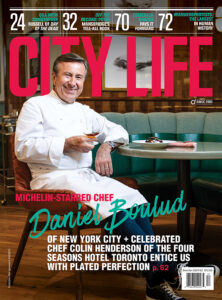




























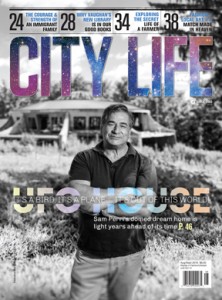














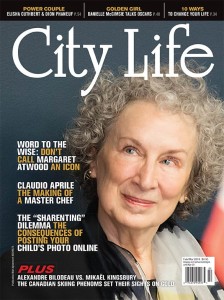
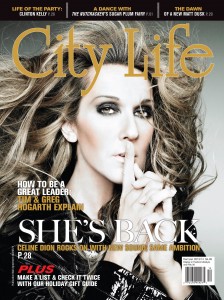
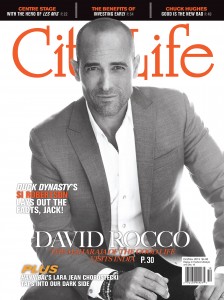





















No Comment